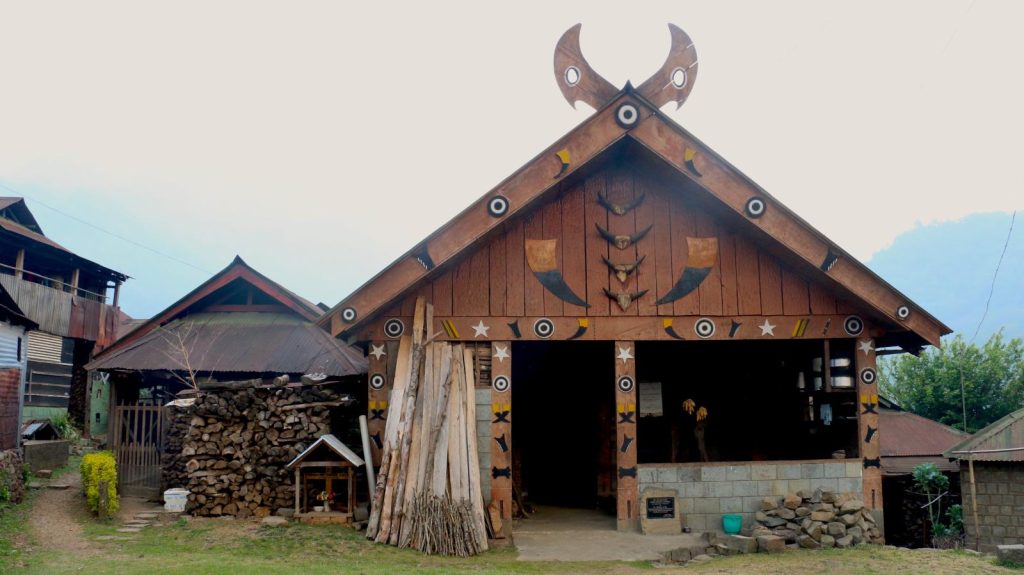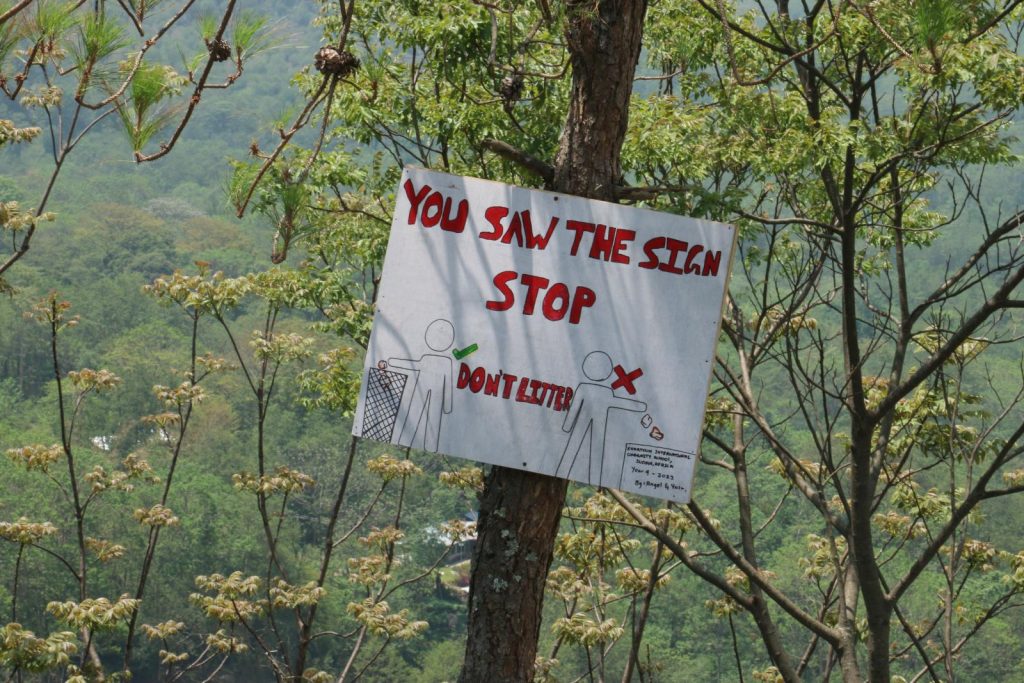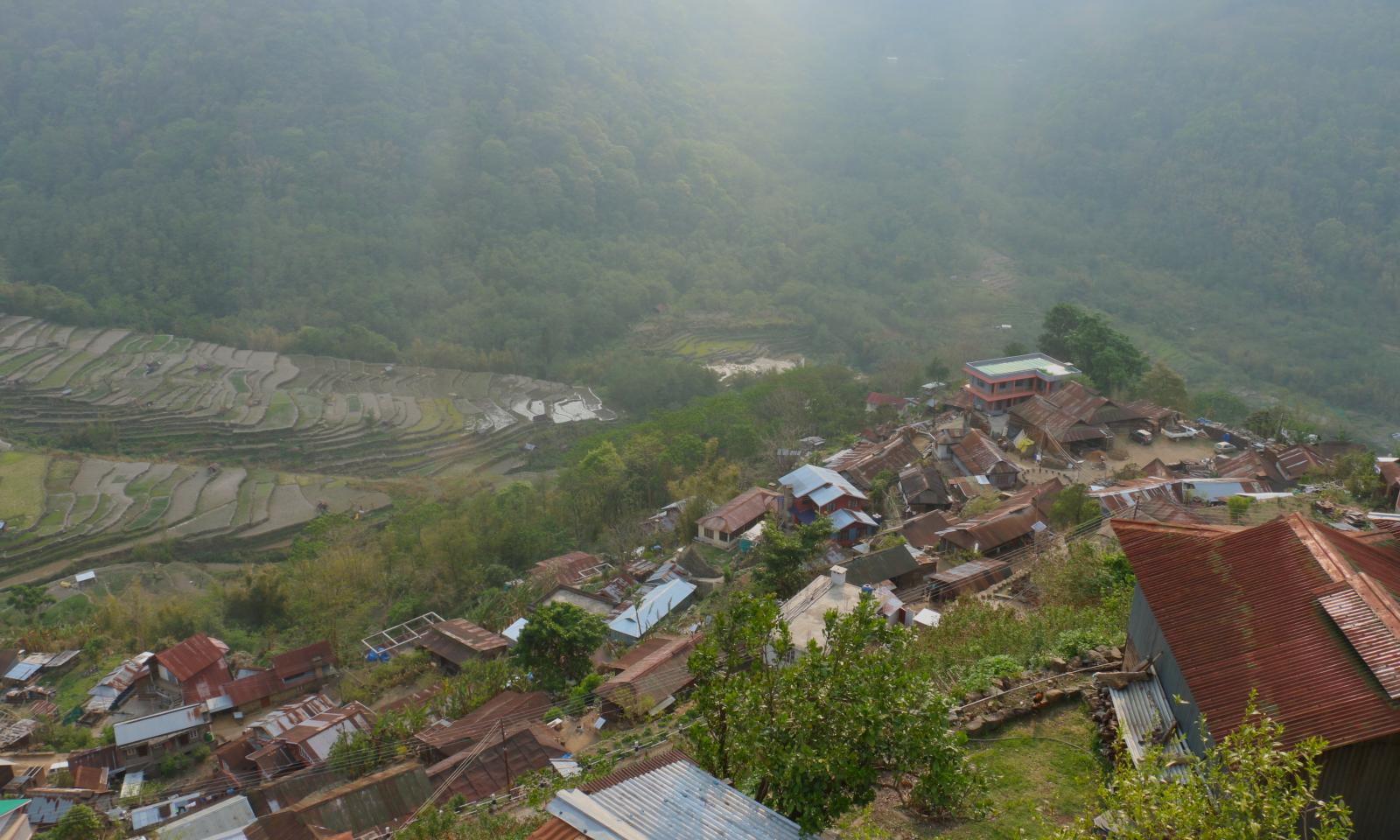It is an April morning, and we head to Khonoma Village from Nagaland’s capital city, Kohima, along with two friends from the Highland Institute. Rita who was born in Khonoma has given us access. She is married Dr. Mekro. They are taking us to Rita’s ancestral family home. Despite being an officer in the Nagaland government throughout her life, Rita is accompanying us silently, picking vegetables and berries along the way, serving food and tea.

Dr Mekro, a Geologist by training spent many years at Phek college. As we drive, he points to the many rocks along the road. He explains how they were formed as layers one on top of each other with the passing of time, ever since the area was under sea water ages ago. The region is adequately green. There is a diversity of flora and fauna. Forests line the road, and the lands seem well cared for. Dr. Mekro, however, shares a different perspective. He has seen the many epochs of industrialization, growth and change here. There are missing forests, wild animals, foods, plants and much more. He is a wealth of information, pointing not only to significant flora, but also revealing their scientific names and the different varieties that aren’t available anymore.

Further along the trip, we arrive at the entrance of a Tragopan sanctuary, which we learn is a protected area, managed by the KNCTS (Khonoma Nature Conservation and Tragopan Society) and the local student’s union. We are warned that members of the union are very active and could well pop out of the scenery if we happen to litter even a tiny bit. For now, however, grass is dotted only with little white flowers, and the air is cool and fresh. Our stop is to examine one of the few protected areas in Nagaland, in which indigenous people practiced hunting as a cultural habit and way of life. Hunting is now prohibited to restore biodiversity. A slightly rusted pipe rushes out of the forest and heads in the direction of the village of Khonoma. Fresh water from the forest supplies the homes of Khonoma village.
Khonoma is one of the most frequented tourist villages in Nagaland. This is our first visit, and we are struck by the beautiful stone paved streets. We learn that one of the livelihood activities in Khonoma happens to be stone quarrying. The Baptist and Catholic churches and the forts of the village area are all built with the local stone. People are shaping the rock into perfect square blocks as we walk by. The village is home to three wards or Khels, and three forts – each one representing one part of the community inhabited by the village’s different clans from the Angami Naga tribe. Our guide mentions that although the Angamis are the protectors of these lands, they are open to sharing their world with others. We do not take this lightly. It is truly a privilege to visit these lands. The thought is also significant because Khonoma was one of the villages that resisted colonization by both the British and Indian governments. Dr. Mekro puts it well when he explains: “Khonoma’s people gave quite a headache to the British.” In this way, we gain a little insight into this space that never gave into the British or Indian Army’s attempts to conquer them.
If they had, perhaps their traditions, stories, and way of life too would be considered inferior to the rest of the world, as is the case for indigenous people elsewhere. Perhaps none of this would exist. On the hillside, as we drive up, we notice trees lining the land in rows, but their growth is stunted. In the night, someone mentions that they could give a scare to even those who are not very faint hearted. These bulbous trees are trucks of the Alder tree, one that is special because it releases nitrogen into the soil even as it produces stems and wood for harvesting.
The method of pruning trees methodically is called ‘pollarding,’ where each tree is cut but also allowed to regenerate. Stems are picked for their strength, and finally allowed to shoot up towards the sky where they reclaim their place as wood for fuel in everyday life. This is an indigenous method, meant for wood production even as it protects the forests from excessive logging and deforestation.
We learn later that deforestation was a big problem in Khonoma before 1998. This was when warring factions decided to come to an agreement among themselves and protect the forest and the local Tragopan so it could become a sanctuary for their people and the village.
Nagaland’s connection to India is fraught with a history that would be difficult for any one person to keep track of. At the same time, our guide for the day, explains that the villagers rarely sell their crops. They eat what they produce, mostly keeping it for their family well-being and sustenance. The idea is not to produce crops commercially, but to grow them in a way that is organic, and protective of the soil.
There is a strand of indigenous knowledge running through the entire conversation. At the same time, the point of interest remains the role of hunting. Surrounded by forest lands, many Naga villages concentrate their residences within the centre of the community. The surrounding forests hold a plethora of stories, folk, indigenous, modern, and are the sites of many a picnic and vacation for the young. For the older generations and perhaps the young too, they are also a source of food and culture. To grow up in Nagaland means growing up with flowing streams and flourishing trees, but more specifically with parents who know how to protect their ways of life and demand what is rightful for a flourishing existence. Even with aspects such as the protection of forests, there is the potential to sign land away inadvertently. Therefore, residents of Khonoma being educated and well connected, have ensured that the laws don’t enable land grab, but truly allow for the protection of their village through a nuanced understanding of the laws and what they entail.
Dr Mekro is not pleased with the current state of the Environment in Nagaland. He explains that the forests of Seithekema, close to the commercial capital of Dimapur were once full of birds and wild animals and are now emptied by the many years and layers of development that have come through, first a sugar mill, a rum refinery and now a grab for the residential plots. He has even produced a book about this place, where he recounts that the lands were once home to migratory birds that would flock through the sky in lovely formations, even as their numbers dwindled.
Back in the forest, we are shown the image of a face in the rocks. Dr. Mekro explains that this is the God that hunters would pray to for a bountiful hunt. It continues to be a reminder of a time and people whose Gods were not yet colonized or replaced by Christianity. In earlier times, the God was a source of inspiration to hunters who had to look for food. Today, the rock is a reminder of the earlier days before hunting was replaced with a new ethic. How did this village of staunch hunters turn into conservationists? This is a story for another visit and time. For now, we are happy to look at the vast forests, many waterfalls and healthy paddy fields that make Khonoma a very picturesque village, all of which are enabled by years of concerted efforts and hard work on the part of various people.

Where Hunters Turned Conservationists – first visit to Khonoma village
By Tarini Manchanda.


